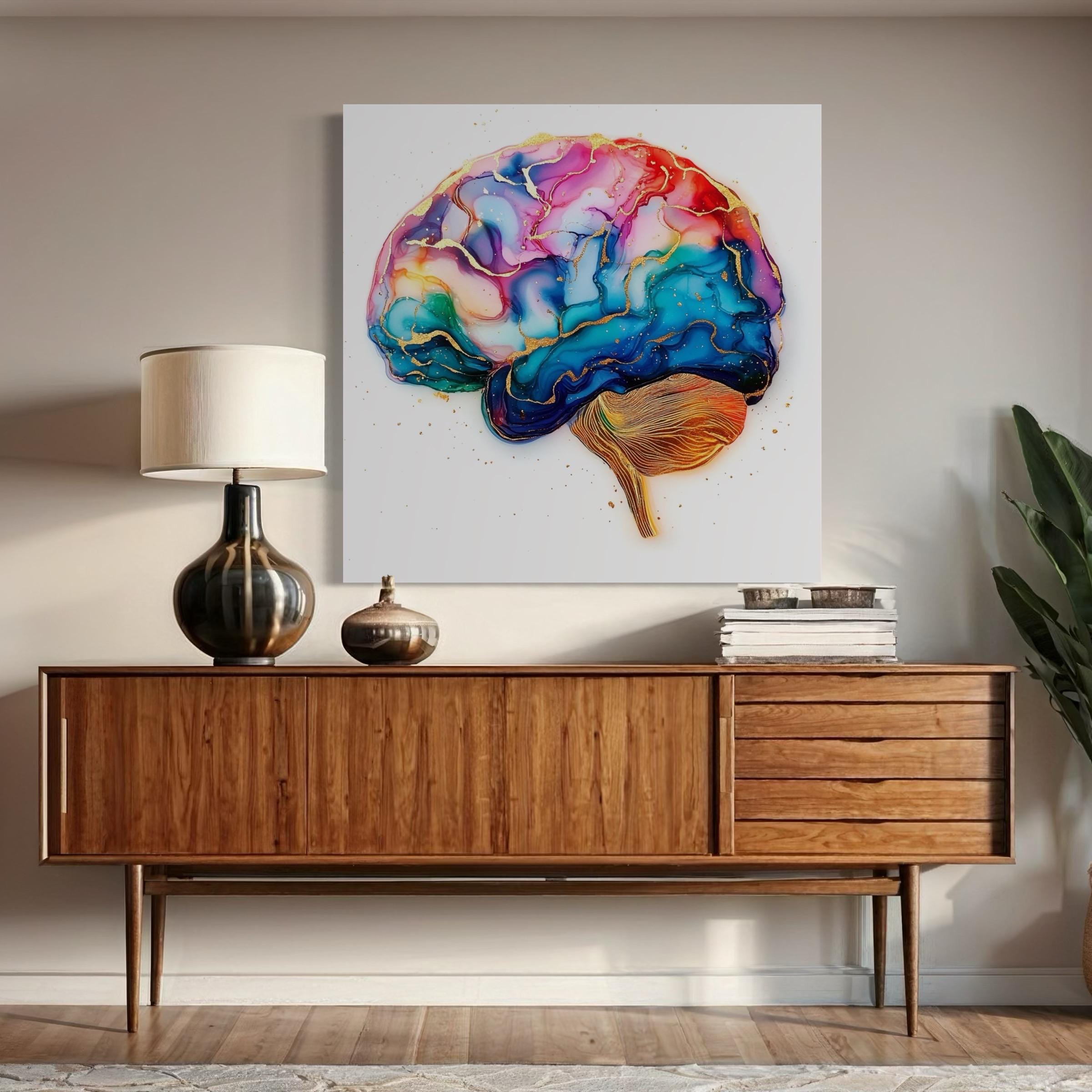Blue–Gold Brilliance: Neuroscience Wall Art That Elevates Clinics, Therapy Rooms & Modern Homes
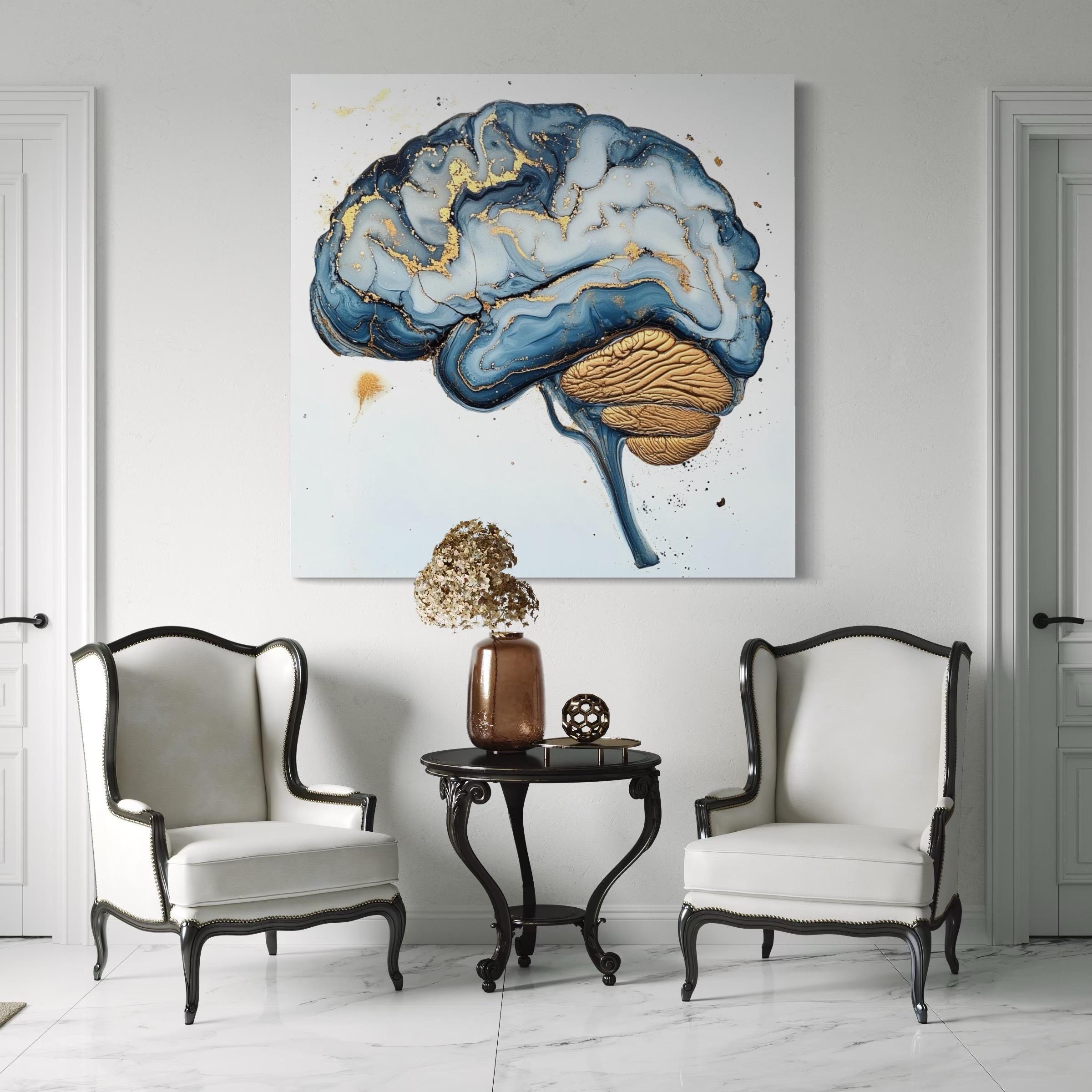
Why brain anatomy art belongs in care spaces
Thoughtfully chosen visual art supports calmer, clearer experiences in healthcare environments. A well-placed piece acts as a positive distraction in waiting rooms, introduces meaning in consultation spaces, and signals care for staff well-being. Abstract, legible subjects—like this blue-and-gold brain—offer visual interest without graphic detail, helping reduce anxiety while maintaining a professional tone suitable for clinics, therapy rooms, and hospital corridors.
Across reviews and guidelines in evidence-based design, recurring themes include improved mood, perceived well-being, and better experiences for patients, visitors, and staff when art is integrated intentionally. Choose subjects that are clear, uplifting, and culturally sensitive; aim for soothing palettes and balanced contrast; and place artwork where the gaze naturally rests—reception sightlines, corridor pauses, and behind consultation seating.
Design cue
Select representational or softly abstract art with clear structure. Avoid imagery that could be misread as clinical or distressing in sensitive units.

Color psychology: why blue calms and gold warms
Blue conveys calm, clarity, and trust, making it a natural fit for healthcare interiors and psychology offices. Layering subtle gradients of blue helps lower visual “noise” and supports steadier focus. Accents of warm gold introduce optimism and energy, preventing the palette from feeling cold. The result is a composed scheme that reads professional in clinics and welcoming in modern homes.
Balanced palette moves
- Clinics: Lean cooler—blue walls or textiles; add light oak or white frames; keep gold in small metallic accents.
- Therapy rooms: Blend—mid blues with a warm rug, brass lamp, and this brain canvas in a matte black or oak floating frame.
- Home offices: Warm it up—blue art with walnut desk, linen chair, and soft white lighting for evening work.
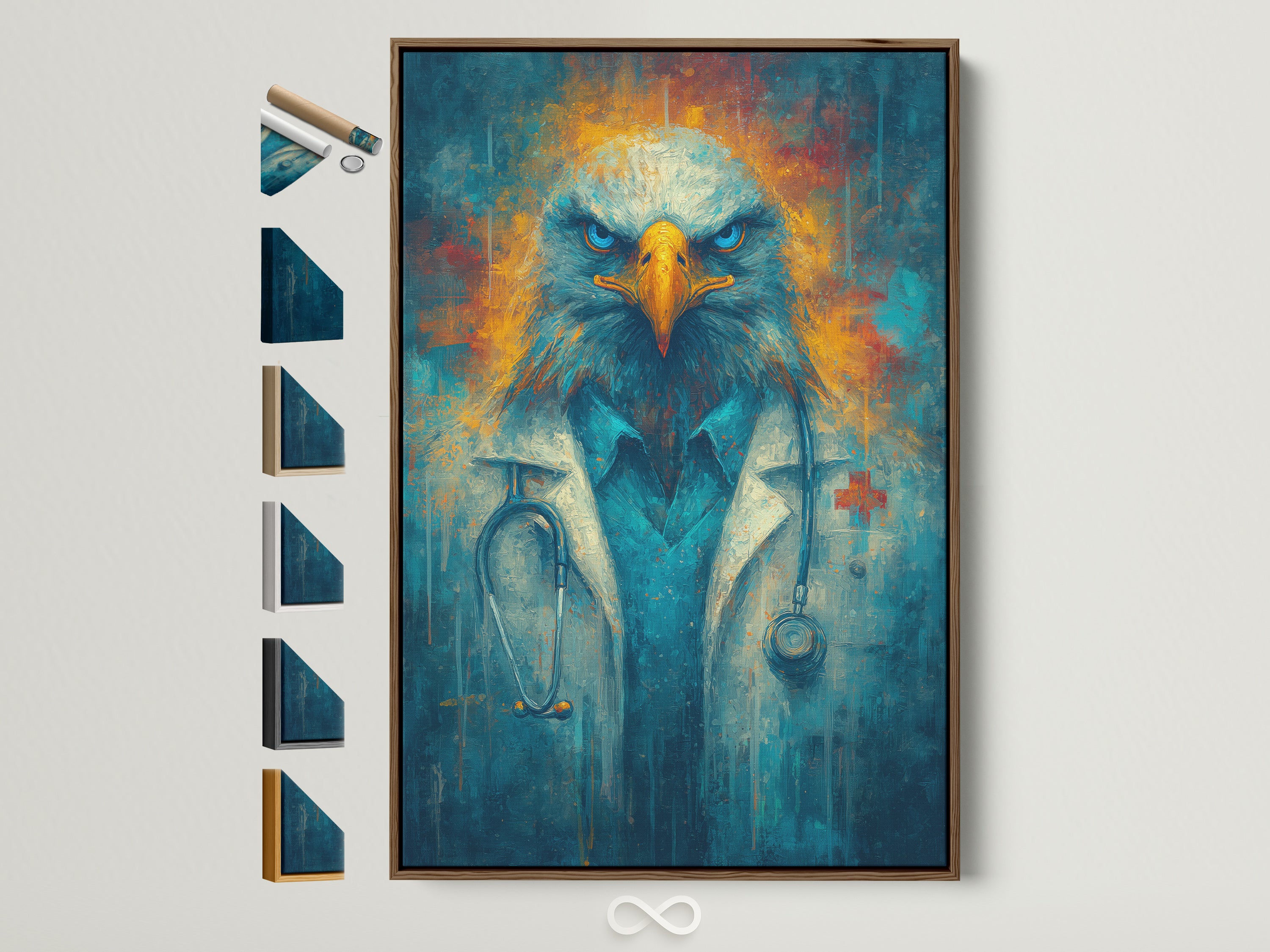
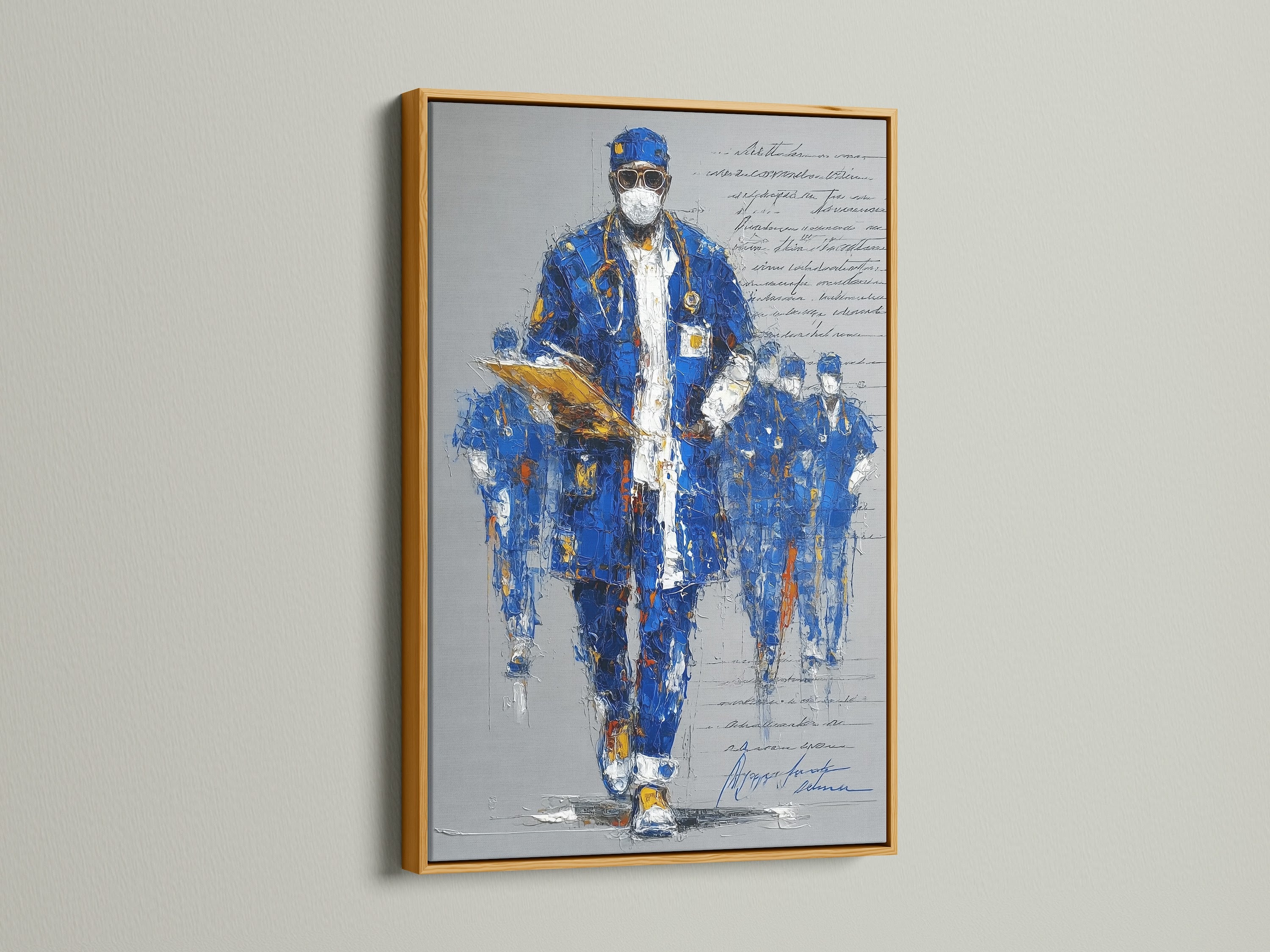
Meet the featured piece
Materials & finish
Printed with archival pigment inks on museum-grade cotton canvas, then sealed for UV durability. Stretched on ~1.4″ solid pine bars with clean, tight corners, it arrives ready to hang. Prefer a crisp border? Choose a floating frame (white, oak, black). Poster-paper and framed-print formats are also available for flexible budgets and glare-control needs.

Available formats & sizes
| Format | Recommended Uses | Common Sizes |
|---|---|---|
| Poster / Fine Art Print | Budget-friendly, low-glare papers, easy to swap frames. | 40×50 cm, 50×70 cm, 60×80 cm |
| Stretched Canvas | Textured, gallery look, ships ready to hang. | 60×80 cm, 80×100 cm, 100×140 cm |
| Floating Frame Canvas | Premium finish; crisp outline that punctuates walls. | 60×80 cm, 80×120 cm, 100×140 cm |
Placement ideas: from waiting room to home office
Reception / Waiting Area
Anchor the primary sightline with a large focal (≥100 cm wide). Blue keeps tone calm; gold accents welcome guests.
Consultation Room
Medium portrait formats (60–80 cm) behind guest seating. The subject sparks conversation without dominating.
Therapy Room
Pair one framed canvas with a soft rug and lamp. Keep contrast moderate; avoid startling reds in sensitive sessions.
Staff Lounge
Use the brain canvas with a second abstract in a complementary palette for a low-effort gallery wall.
Home Office
Center above a monitor or credenza. Add teal stationery and a brass task lamp to echo the palette.
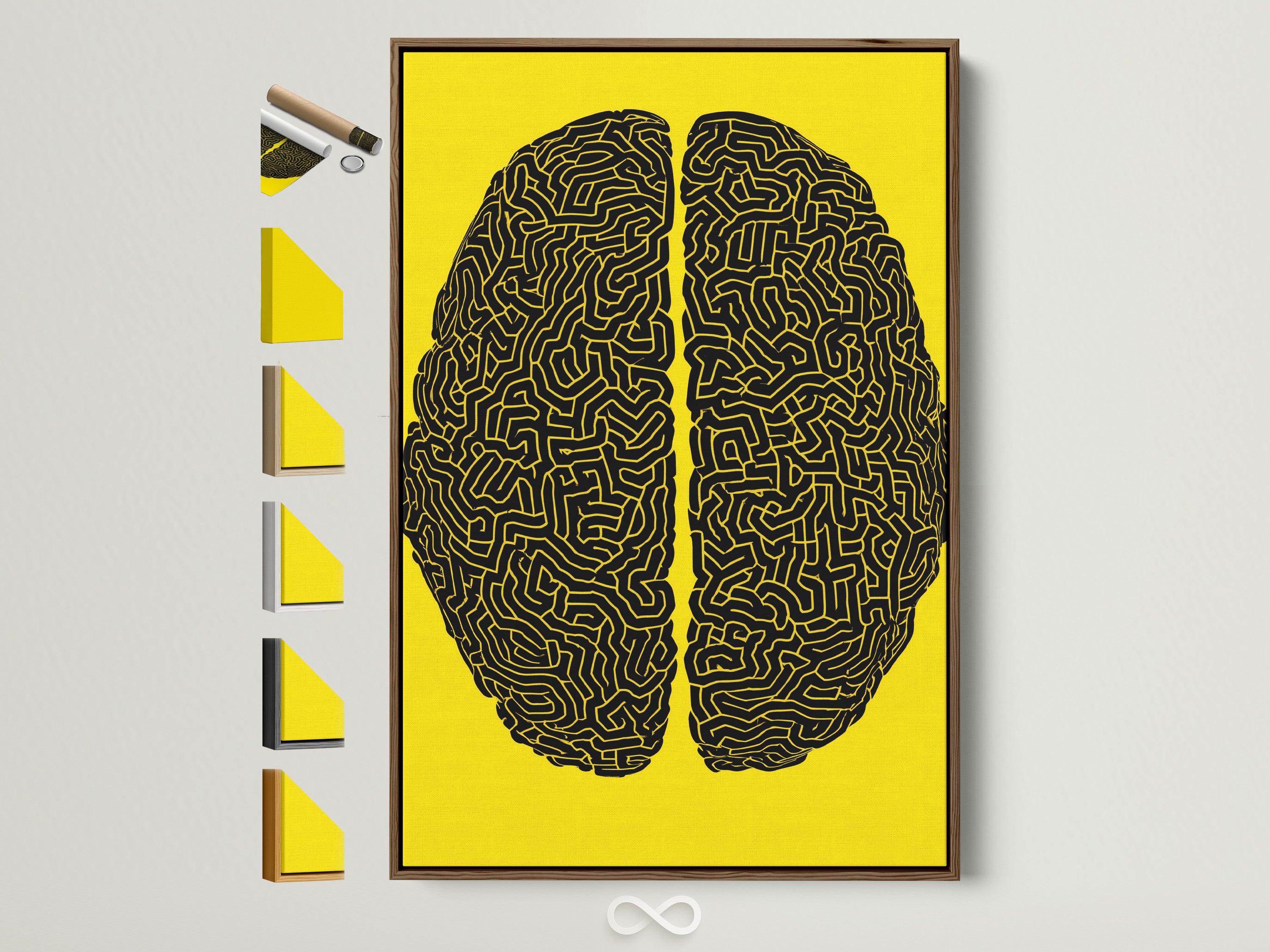
Styling guide for different interiors
Minimalist clinic
White walls, light oak or white floating frame, plant accents. The blue-and-gold artwork introduces clarity without visual clutter.
Boutique therapy studio
Matte black frame, warm textiles, and a brass lamp add subtle luxury around the calmly detailed subject.
Contemporary home office
Walnut desk, bookshelf grid, and teal accessories harmonize with the canvas while keeping focus on work tasks.
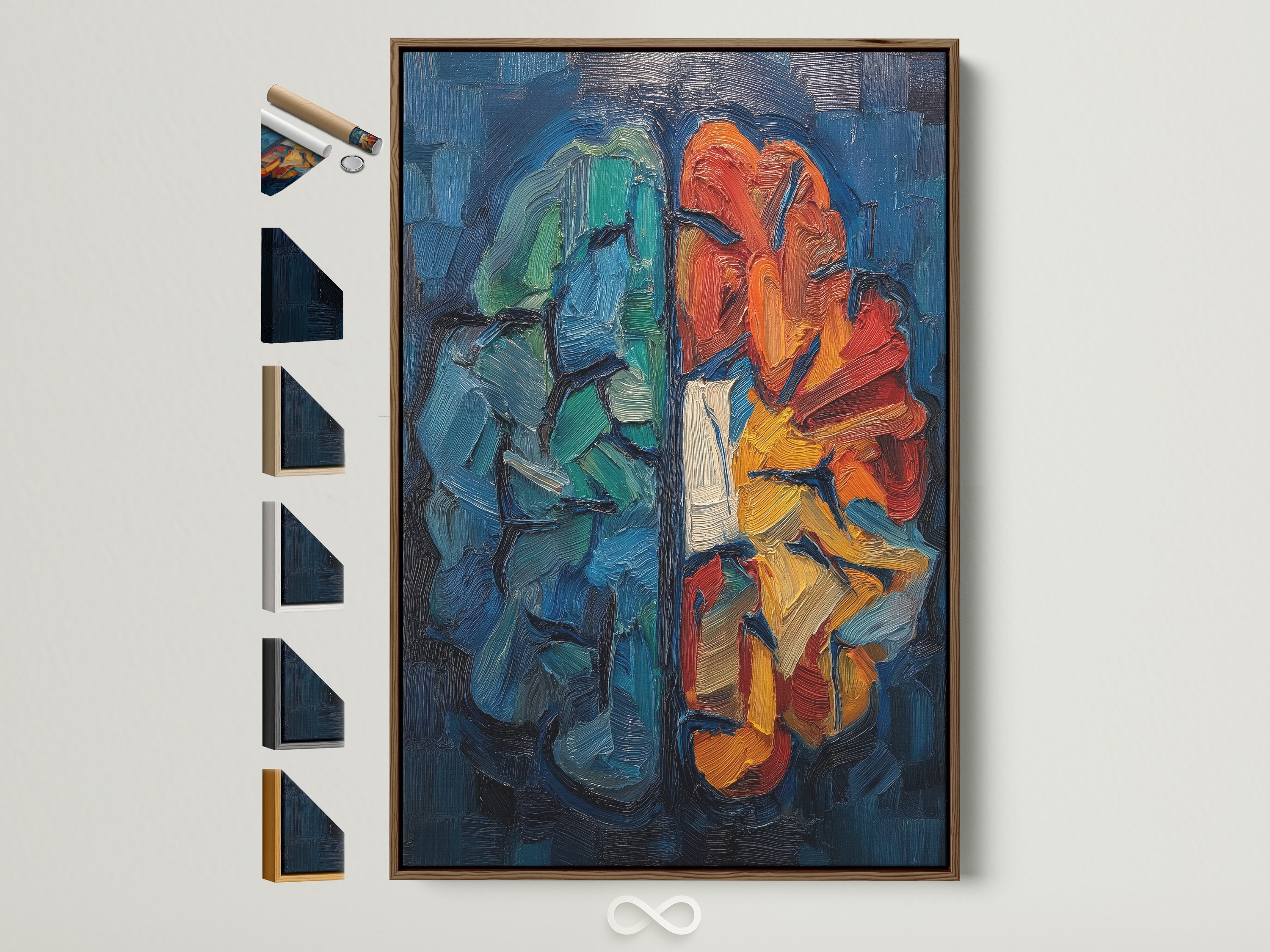
Coordinate the look: 5 in-store picks to mix & match

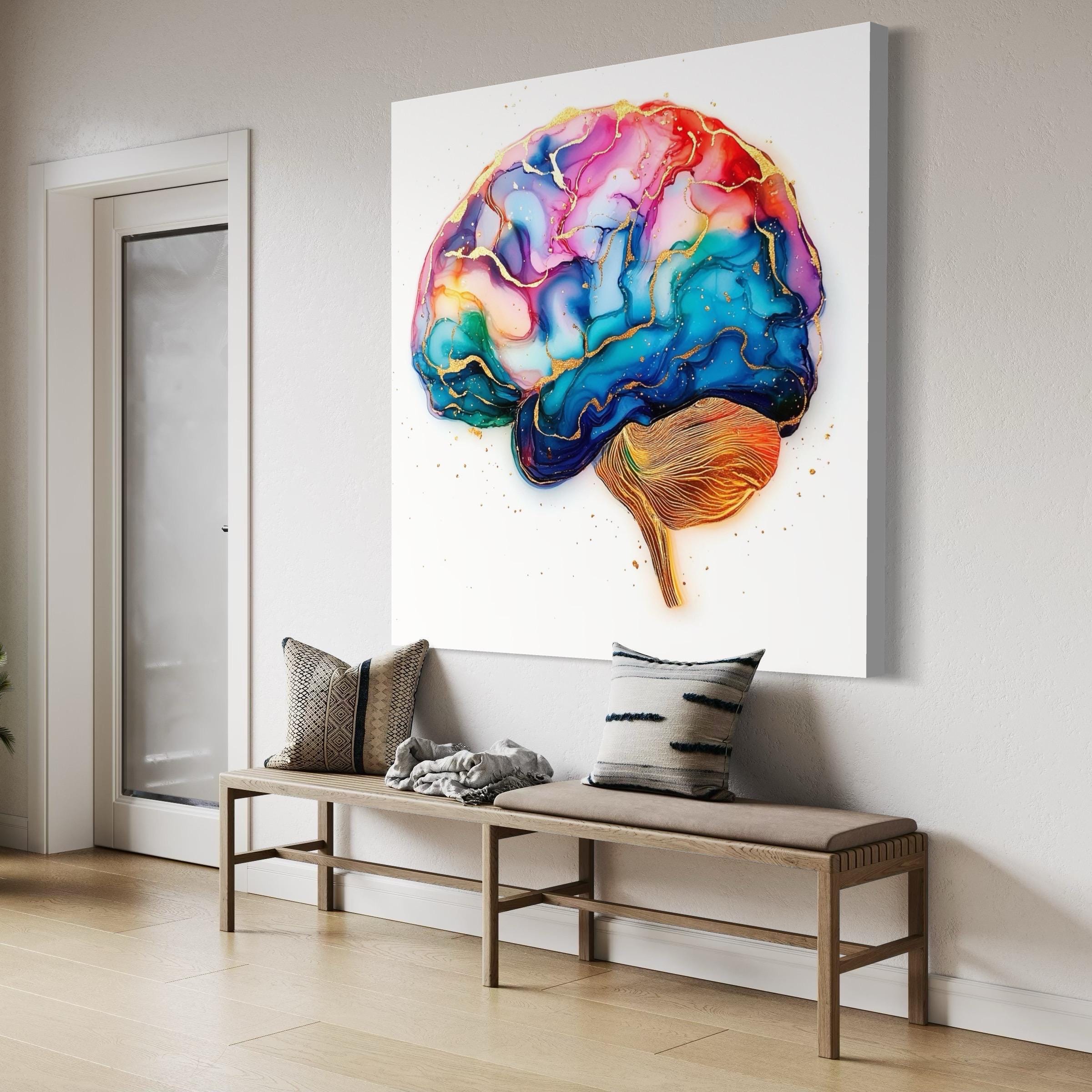

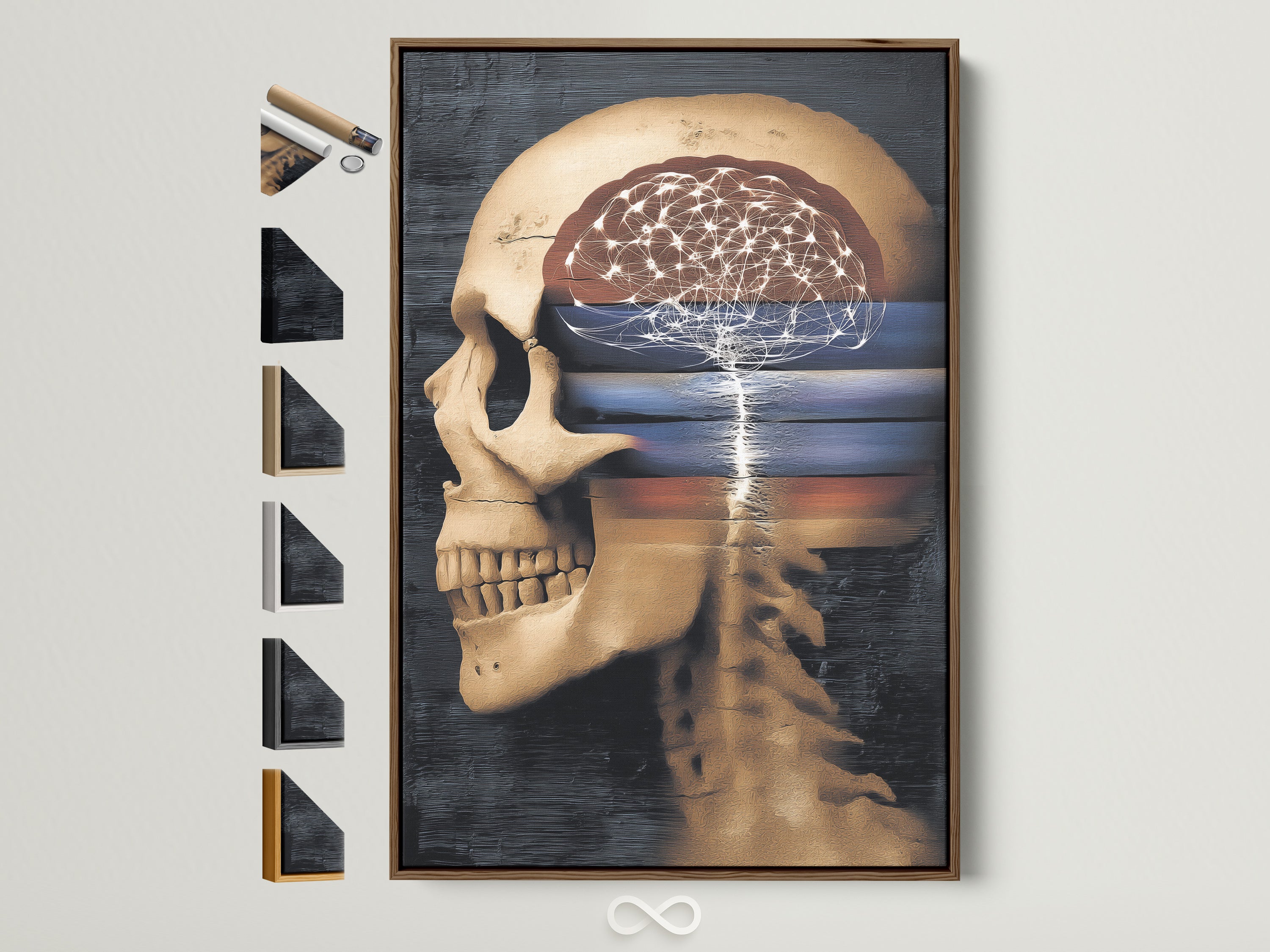

Craft & quality you can feel
The canvas weave adds tactile depth; pigments are calibrated for rich blues and stable golds with excellent fade resistance. Corners are tight, the back is clean, and hang hardware is included so it’s on the wall in minutes. Orders are packed securely for insured delivery with damage-free arrival as the standard.

Size & framing cheat-sheet
- Reception focal: 100–140 cm width (landscape/portrait to match wall). Floating frame for crisp definition.
- Consult rooms: 60–80 cm portrait; keep center height ~145–155 cm from floor.
- Corridors: 50×100 cm verticals spaced 120–150 cm apart to pace foot traffic.
- Home office: 60–70 cm above desk; ensure top edge clears screen by 10–15 cm.
- Frames: Oak for warm balance, white for minimal brightness, black for boutique contrast.
Care & installation
Hang with center at 145–155 cm. Use anchors for drywall, keep away from direct heat/humidity, and dust with a dry microfiber cloth. Mirrored edges on canvas sides keep the image clean when viewed off-axis. For pairs, maintain 6–8 cm spacing.
FAQs
Is abstract brain art appropriate for all patient groups?
Yes—when the palette is calming and the subject is clear. Avoid graphic medical imagery in sensitive units and prefer representational or softly abstract pieces.
Can I get a mockup for my space?
Share a room photo and wall width; we’ll overlay the artwork to scale so you can compare sizes, frames, and placement.
What’s the difference between poster, stretched canvas, and floating frame?
Poster offers flexibility and budget control. Stretched canvas ships ready to hang with textured presence. A floating frame adds a refined outline—ideal for lobbies and executive offices.
How fast is delivery & what if something arrives damaged?
Orders are produced promptly and shipped with protective packaging. If anything is damaged in transit, we’ll arrange a swift replacement.
Bring calm clarity to your space
Choose your size and frame, or build a mini gallery with two brain pieces and one graphic accent for rhythm across rooms. Everything arrives ready to hang—simply measure, mount, and enjoy.
Select Size & FrameRelated reading on evidence-informed art & color
Art in healthcare & well-being
- Scoping review: visual artwork in hospitals and outcomes (PLOS ONE, 2025)
- Visual art in hospitals: case studies & review
- Evidence-based art in the hospital (guidance overview)
- Guide to Evidence-Based Art (The Center for Health Design)
Color psychology for clinical interiors
- Color & psychological functioning (review)
- Color in healthcare: clinician-facing explainer
- Applying color psychology in health environments
Neuroaesthetics & design
Image bank





